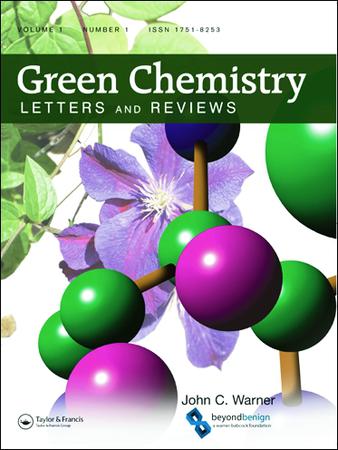Transition-metal-free electrochemical-induced active C(sp3)-H functionalization
IF 5.1
3区 化学
Q1 CHEMISTRY, MULTIDISCIPLINARY
引用次数: 2
Abstract
ABSTRACT Direct C–H bond functionalization is the most effective technique to construct C–X (X = C, N, O, S, etc.), which could simplify the conventional synthesis methods. Transition-metal-catalyzed C–H bond functionalization needs metal catalysts such as palladium, rhodium, iridium, cobalt, copper, etc., which is not conducive to its sustainable development. In recent years, C(sp3)-H bond functionalization without transition metal catalyst has been studied increasingly. In the meantime, electrochemistry has become one of the most dynamic research fields in organic synthesis for the reason that it can substitute the traditional expensive and polluting metal salt oxidants (e.g. Cu2+, Ag+ salt) with current/electrons to act as a redox agent. So the applications of electrochemistry combined with transition-metal-free C(sp3)-H bond functionalization to solve some long-standing challenges have gradually gotten more and more attention in recent years. In this review, the researches on transition-metal-free electrochemical-induced C(sp3)-H bond functionalization from 2016 to now will be systematically presented and the future research hotspots and difficulties in this field will also be prospected. GRAPHICAL ABSTRACT无过渡金属电化学诱导活性C(sp3)-H功能化
本文章由计算机程序翻译,如有差异,请以英文原文为准。
求助全文
约1分钟内获得全文
求助全文
来源期刊

Green Chemistry Letters and Reviews
CHEMISTRY, MULTIDISCIPLINARY-GREEN & SUSTAINABLE SCIENCE & TECHNOLOGY
CiteScore
9.10
自引率
3.00%
发文量
48
期刊介绍:
Green Chemistry Letters and Reviews is an Open Access, peer-reviewed journal focused on rapid publication of innovative new syntheses and procedures that reduce or eliminate the use and generation of hazardous materials. Reviews of state-of-the-art green chemistry technologies are also included within the journal''s scope.
Green Chemistry Letters and Reviews is divided into three overlapping topic areas: research, education, and industrial implementation. The journal publishes both letters, which concisely communicate the most time-sensitive results, and reviews, which aid researchers in understanding the state of science on important green chemistry topics. Submissions are encouraged which apply the 12 principles of green chemistry to:
-Green Chemistry Education-
Synthetic Reaction Pathways-
Research and Process Analytical Techniques-
Separation and Purification Technologies-
Renewable Feedstocks-
Degradable Products
 求助内容:
求助内容: 应助结果提醒方式:
应助结果提醒方式:


